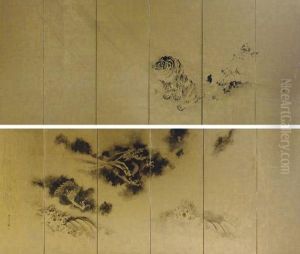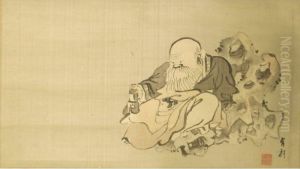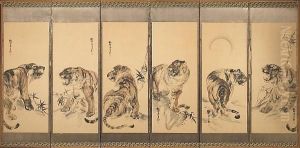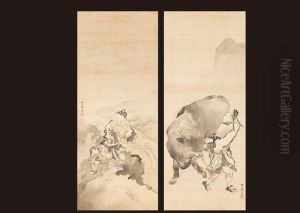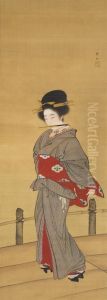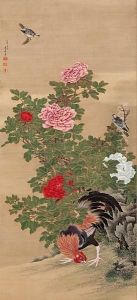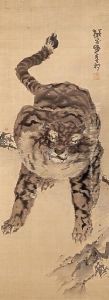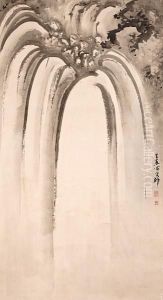Kishi Koma Ganku Paintings
Kishi Ganku, also known as Kishi Koma Ganku, was a Japanese painter who played a significant role in the late Edo period art world. His exact birth year is somewhat uncertain, with some sources stating 1749 and others 1756. Ganku was born in the Higo Province (present-day Kumamoto Prefecture) and moved to Kyoto later in life, where he established himself as an influential artist. He was known for his distinctive style, which combined elements of Chinese and Japanese painting traditions, and he is particularly noted for his dynamic depictions of tigers.
Ganku initially studied under a painter from the Kanō school, which was the dominant style of painting at the time, characterized by its use of Chinese themes and techniques. However, he later broke away from this tradition and developed his own unique approach. His style is characterized by bold compositions, strong brushwork, and a certain degree of realism that was not common in Japanese painting at the time. Ganku's tigers, in particular, are said to possess a lifelike vitality and are considered some of the finest in Japanese art.
In addition to his paintings, Ganku also had an impact as a teacher. He founded the Kishi school of painting, which continued to influence Japanese art beyond his death in 1839. His school helped to nurture several notable artists, including his adopted son Kishi Chikudō and his student Gantai Kishi Renzan. Ganku's legacy is preserved in many collections, both in Japan and internationally, and his work remains an important part of the history of Japanese art.
